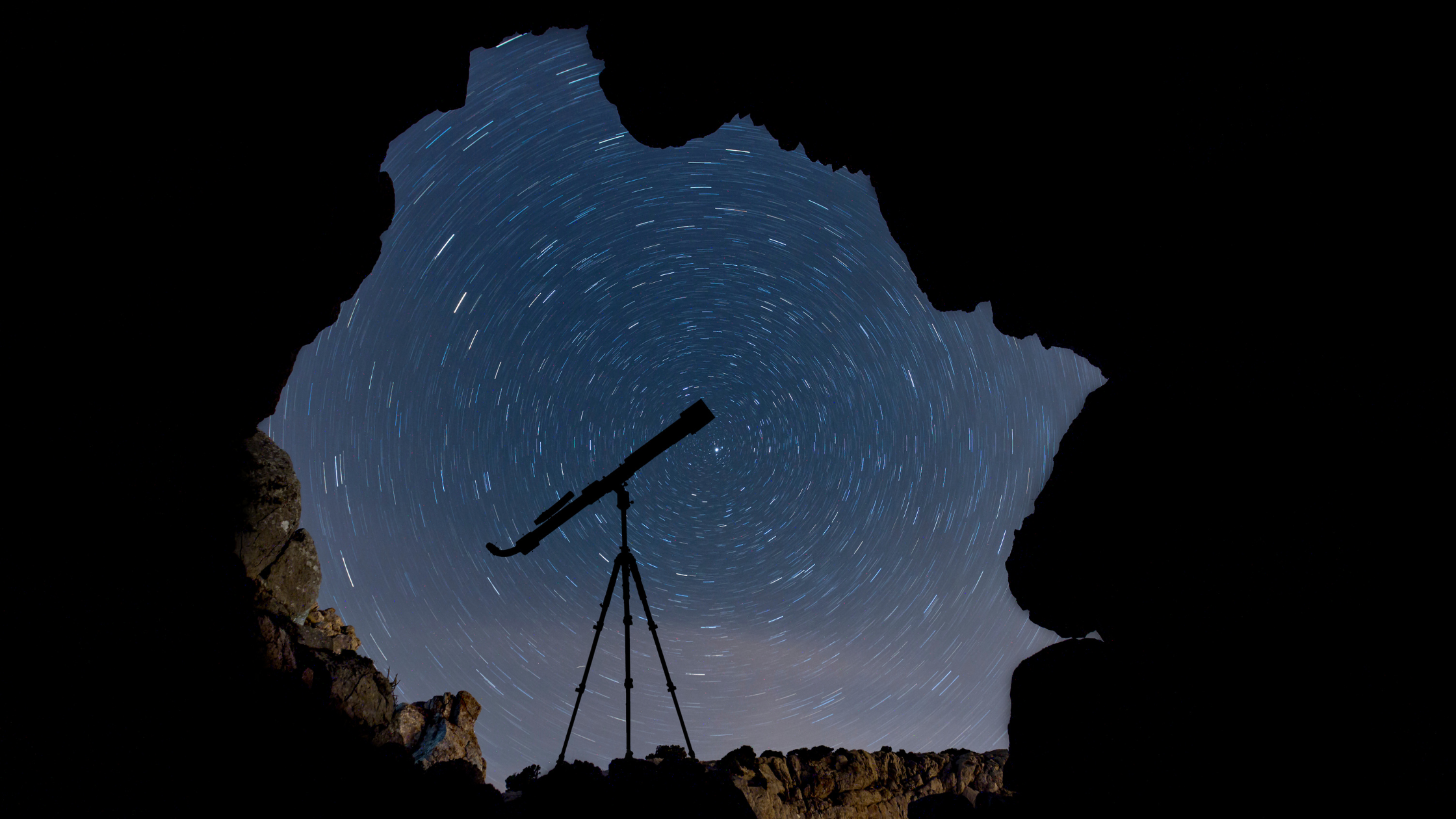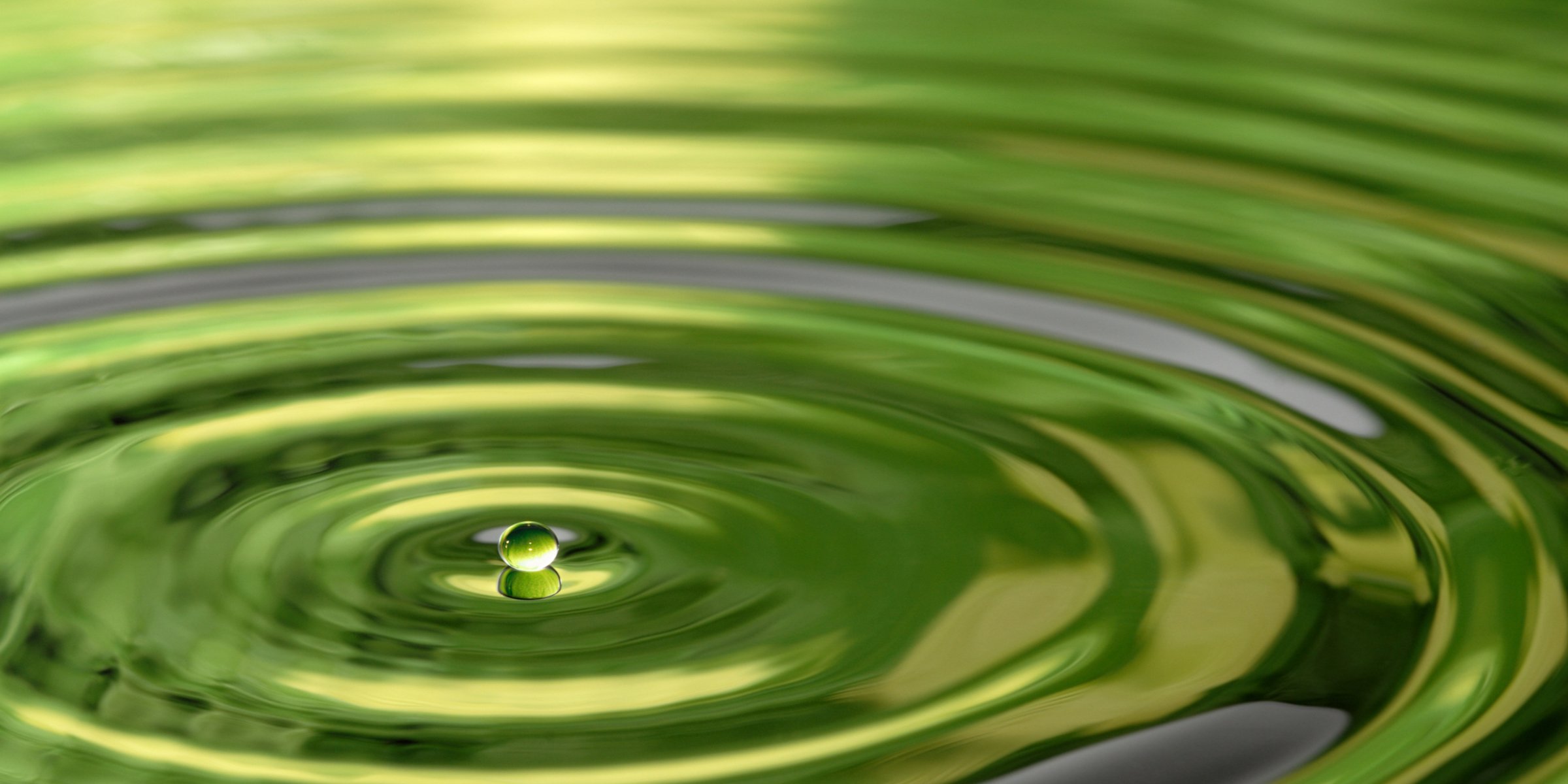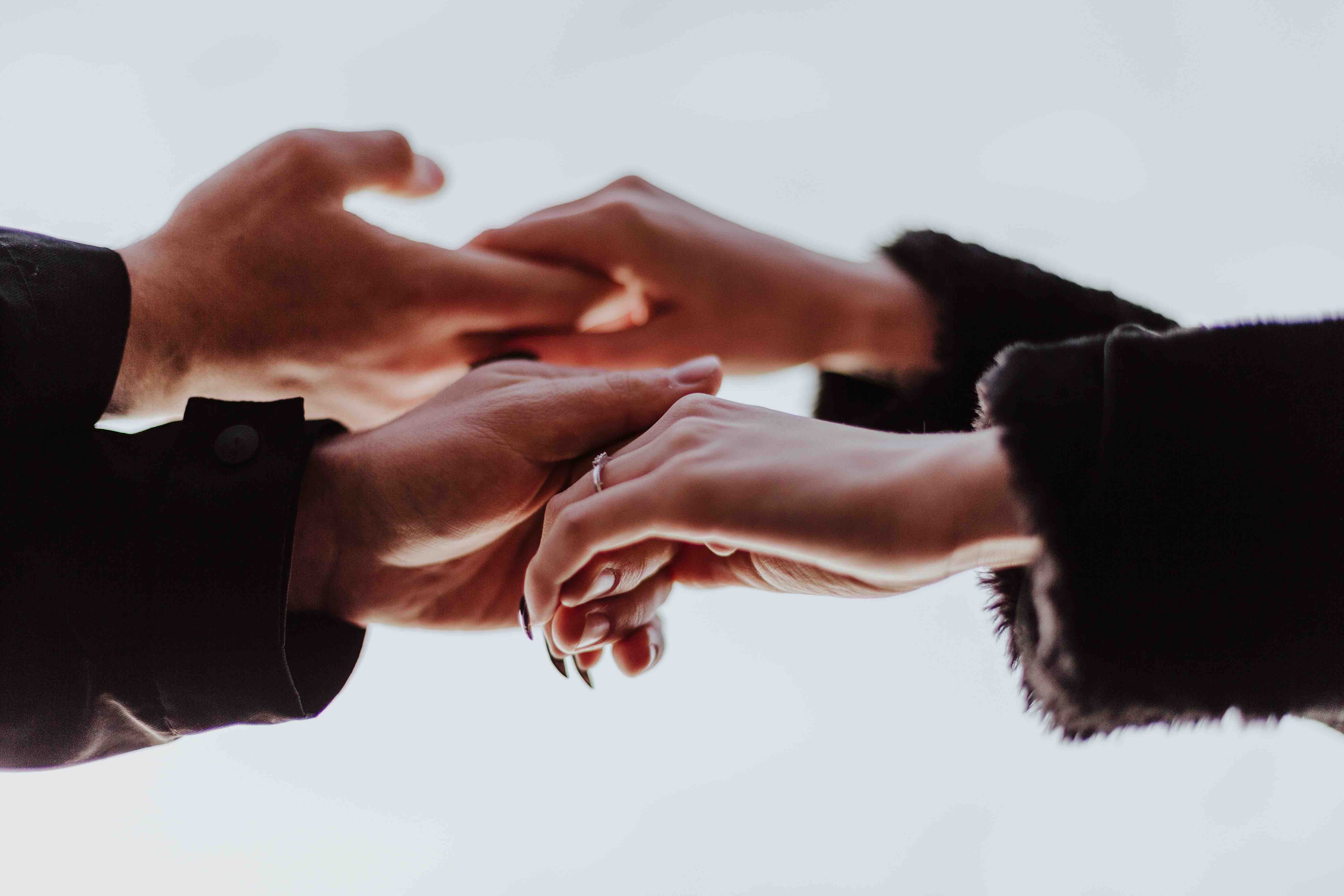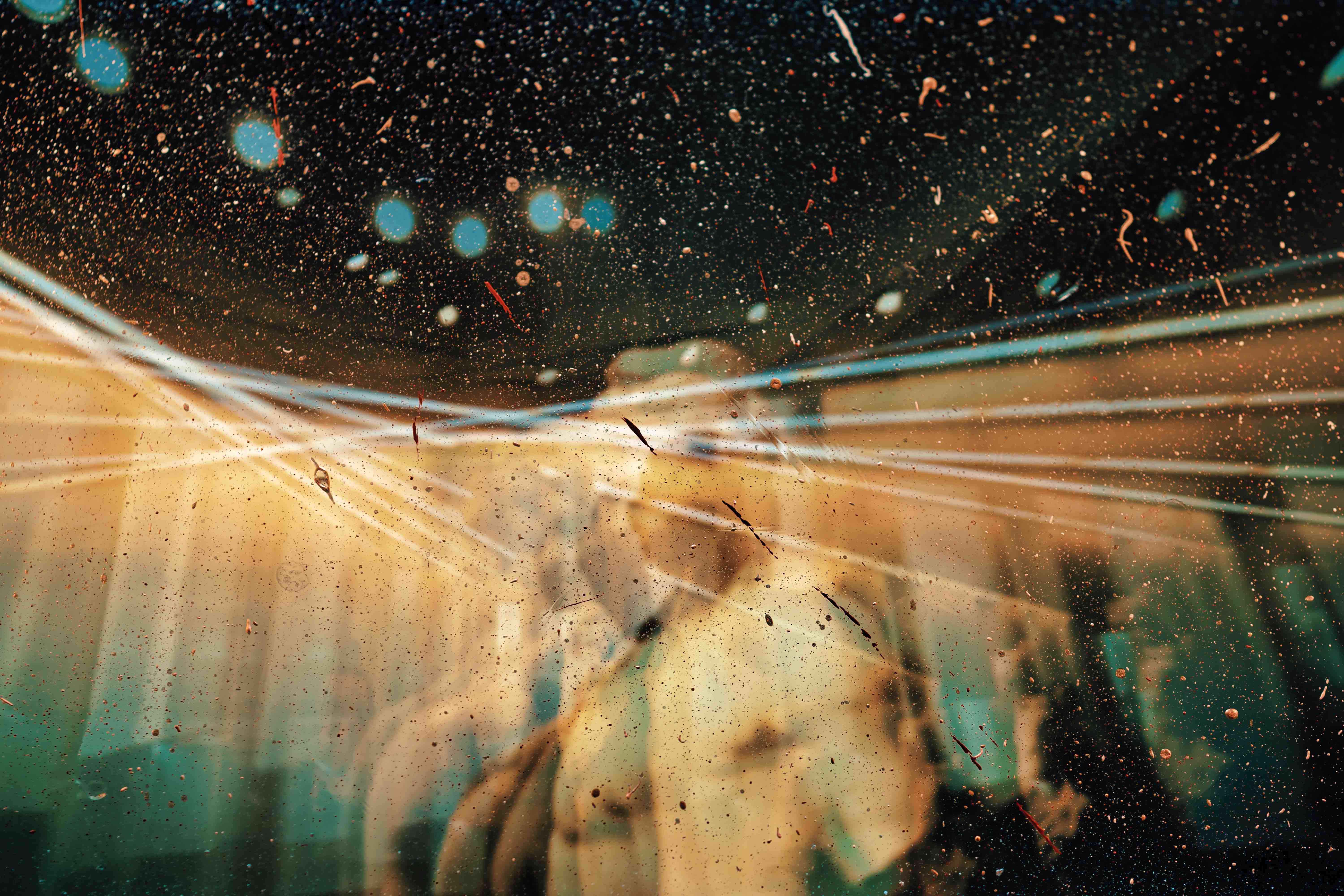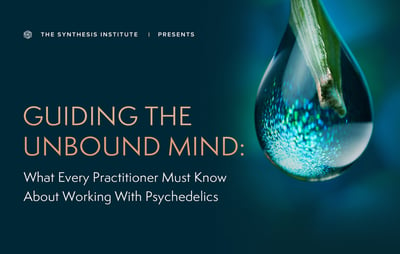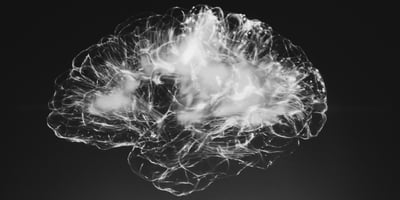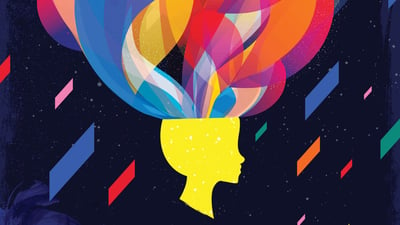There are over 200 different types of mushrooms to be found growing on our planet which are “magic.” “Magic,” here, refers to the fact that, when eaten or brewed as a tea in the right quantity, these surprising fungi ‒ also known as psilocybin mushrooms, or “shrooms” ‒ can temporarily bring about pronounced changes to your perception, vision and physical sensations.
The effects of magic mushrooms feel different for everybody. They can catalyze a vast and varied array of new experiences, from gazing outwards at staggeringly beautiful hallucinations to looking inwards, rewarded by powerful personal realizations. In short, magic mushrooms can take you on a psychedelic trip, or a journey of the mind.
Coined by the British psychiatrist Sir Humphry Osmond in 1957, the word ‘psychedelic,’ which comes from the Greek words ‘psyche’ (mind)’ and ‘delein’ (to reveal, or manifest), means ‘mind-manifesting.’ What could be more advantageous to us in our personal growth and development than manifesting ‒ and taking a rare opportunity to explore ‒ the usually-hidden outer reaches of our own minds?
FROM CAVE PAINTINGS TO CONTEMPORARY RETREATS: HOW OUR CULTURE BEGAN EMBRACING MAGIC MUSHROOMS
The recent resurgence in the popularity of magic mushrooms is all the more remarkable when we consider that they were almost unheard of before the 20th century, known mostly as the stuff of legend.
Ancient art, such as cave paintings, from around the world ‒ some of which dates back to as early as 7,000 BCE ‒ indicates that magic mushrooms were ingested, and influential, in some ancient cultures. However, the practices surrounding their consumption were not documented until the sixteenth century, when the Spanish overthrew the Aztec Empire.
What we know of the ritualistic traditions surrounding magic mushrooms in South and Central America from this period is strongly flavored by the horrified vigor with which the Catholic Conquistadors worked to uproot the indigenous traditions surrounding their use. Believing the mushrooms to hold devilish forces because of their ability to induce visionary states, they banned their ritualistic use and spread rumours about the terrifying, demonic nature of the hallucinations that they induce.[1]
Eventually, the use of magic mushrooms appeared to die out. It was not until the New York businessman and amateur mycologist Robert Gordon Wasson was shown the magic by Mazatec healer Maria Sabina in Mexico in 1955 that shrooms exploded into Western consciousness. Following his stay with Sabina, Wasson coined the term “magic mushrooms,” in 1957 in an article for Life Magazine:
“The visions were not blurred or uncertain. They were sharply focused, the lines and colors being so sharp that they seemed more real to me than anything I had ever seen with my own eyes. I felt that I was now seeing plain, whereas ordinary vision gives us an imperfect view; I was seeing the archetypes, the Platonic ideas, that underlie the imperfect images of everyday life.” (“Seeking the Magic Mushroom: A New York banker goes to Mexico's mountains to participate in the age-old rituals of Indians who chew strange growths that produce visions,” Life Magazine, 1957)
The trip that Wasson described was life-changing not only for him, but for the whole of psychedelic culture; it piqued the interest of scientists, psychologists, hippies and the general public. A worldwide fascination with finding, picking, eating and expanding our minds with magic mushrooms was born.
This mushrooming surge in popularity was followed closely by the so-called “War on Drugs” and the criminalization of psychedelic substances. The first wave of scientific research into their beneficial properties ground to a halt, and shrooms spent several decades in relative darkness.
During these wilderness years, tireless campaigning from scientists and drug policy reformers alike led to the Psychedelic Renaissance in which we currently find ourselves: a reignition of research into the therapeutic benefits of these banned compounds. In this context, for the first time, magic mushrooms have come out of the cupboard to enter the global stage. There could be no better time in history to begin exploring their benefits. Study results are spreading like spores into our collective consciousness, and a mainstream awareness of the benefits of shrooms ‒ and the ways in which it is possible to access them legally and safely ‒ is growing.
PSILOCYBIN AND PSILOCIN: MEET THE MOLECULES BEHIND THE MAGIC
The main psychoactive components in magic mushrooms are compounds called psilocybin and psilocin. It is these molecules ‒ psychedelic tryptamines ‒ which, when a person ingests shrooms, cause their visionary effects.
Most types of magic mushroom contain both psilocin and psilocybin (in greater amounts). Psilocin is the pharmacologically active form of psilocybin. When a person consumes psilocybin ‒ in the form of a magic mushroom, shroom tea or, perhaps, if taking part in a scientific study, in the form of a pill ‒ the psilocybin is broken down by the body and becomes psilocin, at which point the psychedelic trip can begin.
WHY USE MAGIC MUSHROOMS TO EXPLORE YOUR MIND?
Recent scientific research into psychedelic mushrooms, and their main psychoactive component, psilocybin, has revealed that a host of potential lasting medicinal and therapeutic benefits are attached to the psychedelic experience that they provide, beyond the trip itself. A few carefully structured psilocybin trips can help a person in a multitude of different ways, including quitting smoking, and overcoming alcohol dependency and depression, alleviating end-of-life anxiety and reducing symptoms of obsessive compulsive disorder (OCD).
It is this increasingly strong evidence-base for its benefits that has helped transform psilocybin from a banned substance to an FDA-approved medicine: trials which are set to render it available as a prescription-based panacea for treatment-resistant depression are currently underway in Europe and North America.
In healthy people, the benefits of psilocybin have been found to include dramatically boosting one’s mood, increasing goal-directed behaviour and a propensity towards positive emotions,[2] and enhancing creativity. In one study by the John Hopkins Psychedelic Research Project, psilocybin facilitated mystical encounters so profound that, over a year later, volunteers ranked their trip among the “most meaningful and spiritually significant [experience] of their lives.”[3]
Most recently, magic mushrooms have been entering mainstream consciousness more widely than ever before. Increasing numbers of people are taking small amounts of shrooms, every 3-4 days, in order to enhance their engagement and enjoyment of the world around them, while the mushrooms give them a sub-perceptual psychedelic ‘lift.’
I’D LIKE TO EXPLORE THE BENEFITS OF MAGIC MUSHROOMS… WHAT NOW?
As new studies continue emerging, and an ever diversifying public continues to report that their personal journeys with magic mushrooms have worked wonders on all areas of their lives ‒ from sharpening their focus to giving them greater insight into their interpersonal relationships ‒ it’s hardly surprising that greater numbers of previously uninterested individuals are curious about seeing what magic mushrooms could do for them. But, to have a positive, life-changing trip, it’s crucial to seek out the optimum conditions in which to let the magic unfold.
For this reason, many people are choosing to take this important step at specialized retreat centers: havens from the outside world, which provide a safe and legal means of accessing certain psychedelic substances. As all good retreat organizations comply with the drug laws of the countries in which they operate, a psychedelic retreat can afford you the opportunity to relax totally as you experiment with substances like psilocybin, (which, despite the promising research, are still currently prohibited for general use in so many countries and contexts around the world).
But a retreat should provide you with more than just a beautiful background and legal security. You have the best chance of feeling long-term benefits from a psilocybin journey which takes place in a setting that has been caringly crafted by experts: guides with specialized skills in helping others as they navigate altered states of consciousness. At Synthesis, our facilitators will help you prepare for, process, and profit from your experience, offering a highly personalized journey into the magic of psilocybin which is designed to maximize your personal takeaways.
The Experience Of Taking Magic Mushrooms: What To Expect
During a psilocybin trip, rushes of emotion are particularly common, including euphoria and a sense of total immersion in your surroundings. These are often accompanied by visual changes; the boundaries between shapes may blur, the air may take on a substantial, hazy quality. Try closing your eyes; the darker your environment, the more the mushrooms can work their visual magic on the landscape of your mind. The divide between the real and the imaginal can disappear altogether, ushering the new, lighter-feeling you into a world beyond the everyday; a realm which feels timeless and full of creative possibilities…
The psilocybin experience is, of course, different for everyone, but all psilocybin trips follow a similar pattern and timeline:
THE ONSET
The effects of magic mushrooms usually begin to kick in between 30 minutes and one hour after ingestion, although they can take up to two hours. The fuller your stomach, the longer it may be before you start to feel altered. This feeling may be subtle at first, like a glimmer of a different energy spreading through your body, which intensifies as you begin taking a sharper interest in your surroundings.
The things you can see, or your thoughts, may suddenly strike you as humorous. This initial shift in perception, from the everyday to the ethereal, is accompanied by twinges of anxiety or nausea in some cases. This is perfectly normal, and nothing to be concerned about in and of itself. With the right atmosphere and setup, the initial insecurities that you may feel usually turn out to be teething problems, which wear off as the trip intensifies. The atmosphere at Synthesis is carefully curated to accommodate the possibility of anxiety and alleviate it, ensuring that the onset of your psilocybin experience is as comfortable as possible.
THE TRIP
Although time can appear to slow down, speed up or disappear altogether during a psilocybin mushroom trip, the acute effects of magic mushrooms, i.e. the main part of the trip, unfold over four to six hours. During this time, new sensations will simmer, build, and develop within your consciousness. The intensity and flavor of the experience that you have during the trip itself will depend on many variables, including:
- Your mindset
- Your metabolism
- The type of mushrooms you have taken
- The dose
Visual and cognitive changes which people commonly experience after consuming psilocybin mushrooms may include:
Visual distortions. These include drifting (the warping or morphing of objects and surfaces), colors changing or intensifying, and the formation of a haze in the air. The movements of people or objects may appear to result in visible trails; the scene around you may appear split into different sections, or to develop visual geometry ‒ bright patternation that appears to represent the inner workings of things. As your depth perception alters, your sense of the size and distance between objects in the environment may begin to shift.
Cognitive effects. The high from magic mushrooms is hazier, less stimulating and more relaxed, than other psychedelic tryptamines, such as 2C-B and LSD. Nevertheless, expect surges of strong emotions, including compassion, empathy and affection towards others, particularly those who may be sharing the experience. You may feel multiple emotions simultaneously; confusion, fear, and paranoia are possible, particularly with those who are new to experiencing altered state of consciousness, or are unprepared for the trip. Old memories may surface, or recalibrate. Your thoughts may become more detailed, with richer connections between one another; creative breakthroughs are common.
For more information about the various sensory and perceptual effects of psilocybin, see PsychonautWiki.
After four to six hours, the effects of the shrooms will begin to wear off. You should expect to feel normal, with your ability to sleep restored, around eight hours after first consuming them.
THE AFTERGLOW
The period after the peak effects of the shrooms have worn off is known as the “afterglow,” with good reason: you often find that an undefinable sense of brightness, and renewed enchantment with the world, stays with you beyond the trip. You may not be “tripping” anymore, but gleams of the intellectual inventiveness that characterizes the acute psilocybin experience remain.
This possible sense of renewed wonder and recharged energy can last for hours or days, depending on the individual, the strength of the shrooms, and the nature of their personal journey.
THE DOSE
When tripping on magic mushrooms, the intensity of your experience will be directly proportional to the quantity of psilocybin you have consumed.
It is important to note that the concentration of psilocybin and psilocin in your mushrooms; and/or any other psychoactive compounds which may be present; can vary enormously, depending on multiple factors including:
- The genus (type) of mushroom
- How they have been grown and prepared
- How fresh they are and/or well they have been stored
- Which parts of the mushroom your dose is composed of ‒ the concentration of psilocybin is often slightly greater in their caps than in their stems
Tip: The natural variation between different mushrooms and their caps and stems are beautiful, but it can lead to surprises in terms of the experience provided by different shrooms of the same weight. In order to help ensure that your trip is neither more intense (nor weaker!) than expected, we recommend grinding your dried mushrooms into a powder before weighing out your dose.
There are various ways to describe the size of your dose, in relation to how it makes you feel. These include:
The light dose.
Also known as the “effective dose,” at this low dose, you will experience physical and visual changes which you can say for certain are the effects of the drug, but these will be slight; a certain light-headedness, and a renewed awareness of the brightness of colors around you, for example. With the Psilocybe cubensis, a popular type of psilocybin-containing mushroom, an effective dose weighs in at between 2.5 and one gram of dried mushrooms.
The common, or medium dose.
Although there is no such thing as a common, or typical psilocybin experience, the common dose is so-called because it’s the typical dose at which people take the substance. With magic mushrooms, this dose results in pronounced changes in perception. With the Psilocybe cubensis, a common dose of weighs between two and 3.5 grams.
A strong dose
A strong dose of Psilocybe cubensis – i.e. one which delivers a similarly flavored, but heightened version of the experience produced by the common dose ‒ weighs between 2.5 and 5 grams. The greater the amount of mushrooms you take, the more consumingly kaleidoscopic your hallucinations become; hidden memories may surface and your sense of time may expand, revealing portals to past and future universes.
The high, or heavy dose.
Five grams of magic mushrooms was dubbed the “heroic dose,” by the celebrated ethnobotanist and writer Terence McKenna. Radical Mycology author Paul McCoy describes the kind of trip that can be engendered by taking 5+ grams of psilocybin mushrooms as a level five, ultimate or “universal” experience:
“All sense of an ego and any visual connection with reality is completely lost as the psilocybe merges with objects or the entire universe. [...] This level defies description.”
WHAT’S HAPPENING IN THE BRAIN AND BODY?
When psychedelic mushrooms are consumed, the psilocybin that they contain converts to psilocin in the body, mostly within the first hour. This process takes place as the ingested matter is broken down by the intestinal mucosa. The “magic” occurs as the psilocin begins to bind to a selection of the brain’s serotonin receptors, causing the changes in perception that are experienced as a psychedelic trip. The serotonin receptors influence a wide range of different processes, including mood, cognition, memory, appetite, and learning.
Due to the recent reactivation of scientific research into psychedelics, we are approaching a greater understanding of the brain activity that underpins the vast and varied compendium of sensations that are possible within a psilocybin trip. Numerous studies have been conducted which illuminate the the mechanism of action and consequent therapeutic potential of psilocybin. Key findings from the Psychedelic Research Group at Imperial College, London include:
- Psychedelics, including psilocybin, facilitate connectivity between regions of the brain that would not normally interact, possibly accounting for the “out of the box” thinking that occurs during trips, and their many synesthetic effects, i.e. seeing music, or feeling colours. (For more information, see this 2014 study, “Homological scaffolds of brain functional networks.”)
- Psilocybin can “reset” your mind, allowing you to move past depressive thinking. Looking at the effects of psilocybin on people with treatment-resistant depression, the team were able to correlate changes in brain function before versus after psilocybin to lasting improvements in mood. (For more information, see this 2017 study, “Psilocybin for treatment-resistant depression: fMRI-measured brain mechanisms.”)
- Psilocybin can catalyze “ego dissolution:” Functional MRI scans on healthy volunteers have helped identify brain changes under psilocybin which relate to “ego dissolution,” the dissolving of a person’s sense of self that can occur during trips. This can result in sensations of blending into the surroundings, and/or mystical types of experiences. (For more information, see this 2015 study, “Finding the Self by Losing the Self: Neural Correlates of Ego-Dissolution Under Psilocybin.”
As the magic mushroom experience develops, it can bring on a wide variety of physical sensations and changes within the body. Physical changes that you may notice in yourself, or in others who have taken mushrooms, include:
- Dilated pupils
- Muscle tension
- Nausea; this is not uncommon, but usually dissipates after the effects have taken hold
- Sleepiness, particularly at the beginning of the trip
- Yawning
- Watery eyes
- Salivating
- Needing to urinate more frequently than usual
During the experience, your body may feel heavier than normal, or as though it has melded with parts of the surrounding environment. You may develop a pleasant, tingling sensation. Textures will feel more dynamic to touch, and may become perplexing; people often find that they can no longer differentiate between wet and dry.
The more you satisfy your curiosity about the potential of psilocybin mushrooms by finding out more about the thriving field of psychedelic research, the more likely you are to anticipate – and react positively to – facets of the trip itself as your experience unfolds. We recommend exploring:
The wide range of studies on the action of psychedelic drugs in the brain and their clinical utility as treatments for mental health conditions by the Psychedelic Research Group at Imperial College, London The eye-opening research into the mystical and therapeutic properties of psilocybin, carried out by the Johns Hopkins Psychedelic Research Unit, in Baltimore, U.S. The Third Wave’s treasure trove of accessible information on psilocybin mushrooms
How long do shrooms stay in your system?
Most psilocybin converts to psilocin within one hour after ingesting shrooms. Most psilocin leaves the body via urine, bile and feces, during the first eight hours. After 24 hours, only trace amounts of psilocin will remain in the body. These traces will not show up in tests, and will leave the body after a few days; the timeframe of this varies between individuals, depending on factors such as the speed of their metabolism and general overall health. (For more information, see this 2002 review on the pharmacology of psilocybin.)
Good to know: Psilocybin and psilocin are not tested for in standard drug tests, but may be tested for in specialized, extended drug tests in specific situations. (For more information, see Erowid’s “Psilocybin mushrooms: drug testing.”)
STAYING SAFE
At common doses and beyond, feelings of paranoia or uncertainty may occur. With breathing techniques and other simple methods for navigating the tricky waters of the trip at your disposal, these moments are nothing to fear, and can be fleeting. (Check out Getting Higher: the Manual of Psychedelic Ceremony (2017) by Julian Vayne for easy-to-learn neuro-hacks to rely on in any moments of discomfort.)
If you are planning to take more than a light dose of magic mushrooms, it is important to ensure that you are in a comfortable environment, with people you can trust. A person who is practiced in ensuring your safety during your voyage of the mind is called a psychedelic guide, or trip-sitter. And at any dose, if you are considering using magic mushrooms for the first time, seeking out an experienced guide or trip-sitter to provide any support needed as you embark on your journey of the mind is highly recommended.
Types Of Psychedelic Mushrooms
Except for Antarctica, every continent in the world is home to several different genii (varieties) of magic mushroom. You can find psychedelic mushrooms quite commonly in moist, sheltered conditions. They grow well in dung and dense forests near bodies of water. In the wild, all mushrooms, even non-psychedelic ones, are part of a larger structure, much of which grows underground, known as the fungal mycelium.
A fungal mycelium, or mycelial network, is a mass of thread-like, branching tubes of vegetation. The mycelial structure contains powerful enzymes which absorb and break down nutrients in their surroundings, feeding the growing mushrooms above ground.
The species of a magic mushroom relates to the type of fungal mycelium from which it grows. Most psychedelic mushrooms contain psilocybin and psilocin; there are currently 227 known species of psilocybin-containing mushrooms. Some varieties of psilocybin mushrooms contain additional bioactive alkaloids, such as baeocystin and norbaeocystin, which are analogues (close chemical relations) of psilocybin.
Some varieties of magic mushroom are very rare. For example, the uniquely pleasant tasting Psilocybe atlantis has never been seen outside the U.S. state of Georgia. The elusive Galerina steglichii mushroom; which contains psilocybin, psilocin and a third psychoactive compound, baeocystin; has only been spotted once, in the Regensberg botanic gardens in Germany in 1993. Some of these scarcer types of shroom are endemic to particular areas because they require very specific climatic conditions. The small but powerful Panaeolus africanus, for instance, which grows in central Africa and Southern Sudan, which can be found on hippopotamus or elephant dung, but only during the rainy seasons.
Other kinds of mushroom pop up ‒ delighting trippers who seek them out, or stumble luckily upon them ‒ in multiple countries across the globe. This is called cosmopolitanism.
A good example of a cosmopolitan species of mushroom is the Psilocybe cubensis. One of the most well-known species of magic mushrooms, they appear as classic, stubby-stemmed, parasol-shaped mushrooms with predominantly light-to-golden-brownish caps that are bulbous before fruiting, and flat and wide in diameter when fully mature. A certain kind of P. cubensis, popular with home-growers, is known worldwide as the “Golden Teacher.”
Another well-known species of mushroom is the Fly Agaric, or Amanita Muscaria. Believed to be originally of Siberian origins, this genus of mushroom can be found today in Europe, Asia and North America. It contains the psychoactive compounds ibotenic acid and muscimol, rather than psilocybin. Instantly recognisable due to its iconic scarlet top, white spots and sturdy white stalk, the Fly Agaric appears worldwide, on digital communication platforms, in the form of the mushroom emoji. This renders it, in a digital sense, the most cosmopolitan magic mushroom of all. 🍄
OTHER COMMONLY ENCOUNTERED TYPES OF MAGIC MUSHROOMS INCLUDE:
-
Psilocybe semilanceata, which are commonly found in Europe, North and South America, Asia, Australia, and New Zealand. They also go by the name “Liberty Caps”, because of their dark bell-shaped tops. Their stems are slim, and can be wavy.
-
Psilocybe cyanescens, which are quite easily recognized due to their undulating tops. For this reason, they are commonly referred to as “Wavy Caps.” They can be found on the West Coast of the USA, south of the Bay Area, in Central and Western Europe, New Zealand, and parts of Western Asia.
-
Panaeolus or Copelandia cyanescens, which are also known as the “Hawaiian” shrooms, are not the most distinct species, with long, slim stems and light brown to light grey caps. They grow all over the world: in North and South America, Western Europe, Central Africa, South and Southeast Asia and throughout Oceania.
-
Psilocybe azurescens, which are frequently found on the West Coast of the USA, specifically Oregon and Washington. They display a slim stem and a convex caramel-colored cap with a conical top.
SPOTTING SHROOMS, AND AVOIDING ACCIDENTS
Identifying magic mushrooms correctly is important. If you wish to look for shrooms growing in the wild, start by learning about the different species that grow nearby, what time of year they grow, and the composition of the habitat(s) where you can expect to find them growing. This knowledge can help you to avoid mistaking a magic mushroom for a toxic one, which can result in a panicked journey to A&E, rather than a psychedelic trip to the outer reaches of your consciousness.
We recommend consulting an identification book, such as Psilocybin Mushrooms of the World: An Identification Guide (Ten Speed Press, 1996) by the mycologist Paul Stamets, to ensure that mushrooms that you pick match exactly with the profile of a non-poisonous, psilocybin-containing variety. Always seek medical attention if in any doubt as to whether you have ingested a toxic mushroom, without waiting for symptoms to manifest, as this can take hours or days depending on its genus. Most poisonous mushrooms contain irritants that can cause vomiting and diarrhea, but certain toxins can be deadly.
When picking magic mushrooms, it is best to:
- Twist the stem, from just above the ground, until it breaks, rather than pulling, ripping or cutting
- Look at them carefully and discard any which look unhealthy, i.e. with maggots present, or mold
- Carry the mushrooms in a cardboard box, paper bag or basket, to keep them as dry as possible
MAGIC MUSHROOMS: HOW TO PREPARE, DRY AND CONSUME THEM
Freshly picked magic mushrooms can be eaten right away. For dosage, if you are taking fresh mushrooms, it is important to note that 10 grams of fresh mushrooms will roughly correspond to one gram of dried mushrooms. Weighing your harvest before you begin drying it will also allow you to calculate the quantity of shrooms you’ll be left with at the end.
Any mushrooms that you pick and wish to consume at a later date should be dried. The purpose of this is to remove excess moisture from the mushrooms, which are 95% water. If this process is carried out correctly, and if they are stored in an airtight container, the shrooms can retain most of their original potency for years to come.
To dry magic mushrooms, first arrange them on a kitchen towel, and brush away any dirt gently, using a pastry brush. Take care not to compress or damage the mushrooms. Methods for drying shrooms include:
- Using an oven or food dehydrator, on a low temperature; no higher than 150 degrees Celsius
- Allowing the shrooms to dry naturally in the sun
- Positioning them close to the airflow from a box-fan, so that they can be dried by the moving air
- Placing them on a container or drying rack above a drying agent such as silica gel
Always ensure that your shrooms are “cracker dry” before storing them, to avoid them becoming moldy due to retained moisture. (Read more about drying shrooms.)
HOW TO TAKE MAGIC MUSHROOMS
There are many different ways to consume dried shrooms. Your chosen method can depend on factors including how precisely you plan to measure your dose, and how keen you are to minimise the taste. Always weigh your dried mushrooms, or mushroom powder, carefully, before you begin preparing them to eat or drink. A three or four point digital scale is ideal for this purpose.
Some popular ways to take dried shrooms include:
- Eating them straight up. This can be done with or without an accompanying food, such as peanut butter or chocolate, to help disguise their flavour, if needed.
- Making shroom tea. Crush your weighed shrooms into a powder and add them to freshly boiled water, containing a bag of decaffeinated tea. Brew for 10 minutes, and strain before drinking. To finish the dose, repeat the process, using the shroom mush in the strainer, for a second cup.
- Pills. Filling a pill capsule with your chosen dosage of dried, powdered shrooms is an alternative means of ingesting them, with no need to mask the taste.
Tripping On The Right Side Of The Law: The Legality Of Psilocybin Mushrooms
Psilocybin itself is a prohibited substance in most countries. However, in some countries it is legal to possess, grow, or even sell psilocybin mushrooms. For example:
In Brazil, there are no specific laws against the possession or consumption of psilocybin mushrooms, and use of magic mushrooms could even be covered under laws protecting the sacramental use of substances. The British Virgin Islands prohibit the sale of magic mushrooms, but allow for possession and consumption. You will often find vendors selling mushroom shakes without apparent fear of prosecution. In Jamaica, the authorities appear to turn a blind eye to psilocybin mushrooms, allowing its use in commercial retreats and for private personal use.
MAGIC TRUFFLES: LEGAL IN THE NETHERLANDS
The Netherlands is a unique case: psilocybin mushrooms are illegal, but psilocybin truffles are legal. At Synthesis, we provide psilocybin truffles, rather than psilocybin mushrooms, in compliance with Dutch law. Magic truffles contain the same psychoactive ingredients as mushrooms. Truffles differ from mushrooms principally in that they form underground, from strands of the mycelial structure, whereas mushrooms grow out above the surface of the ground. Find out more about magic truffles »
A number of other countries also provide leeway for the cultivation or use of psilocybin mushrooms, to various extents – although none are currently as safe and clear-cut in their policies as the Netherlands.
Shrooms FAQs
Q: HOW LONG DO THE EFFECTS OF SHROOMS LAST?
A: From the moment that they are consumed until the effects wear off completely, a psilocybin trip lasts around eight hours. The acute effects last between four and six hours, kicking in around 30 minutes after ingestion.
Q: WHERE DO PSYCHEDELIC MUSHROOMS GROW NATURALLY?
A: Psilocybin-containing mushrooms grow naturally on every continent except Antarctica. You can find psychedelic mushrooms quite commonly in moist, sheltered conditions. They grow well in dung and dense forests near bodies of water. Some of the most common varieties of shrooms growing worldwide include:
- Psilocybe semilanceata, which are commonly found in Europe, North and South America, Asia, Australia, and New Zealand. They also go by the name “Liberty Caps”, because of their dark bell-shaped tops. Their stems are slim, and can be wavy.
- Psilocybe cyanescens, which are quite easily recognized due to their undulating tops. For this reason, they are commonly referred to as “Wavy Caps.” They can be found on the West Coast of the USA, south of the Bay Area, in Central and Western Europe, New Zealand, and parts of Western Asia.
- Panaeolus or Copelandia cyanescens, which are also known as the “Hawaiian” shrooms, are not the most distinct species, with long, slim stems and light brown to light grey caps. They grow all over the world: in North and South America, Western Europe, Central Africa, South and Southeast Asia and throughout Oceania.
Q: ARE MAGIC MUSHROOMS ILLEGAL?
A: In most countries, psilocybin itself is a prohibited substance, but the legality of possessing and growing psilocybin-containing mushrooms varies greatly between countries. In the Netherlands, for example, it is legal to purchase and consume magic truffles, but not shrooms themselves. Read more about magic truffles.
[1] Cody Johnson. Magic Medicine: A Trip through the Intoxicating History and Modern Use of Psychedelic Plants and Substances. (Quarto Publishing Group, 2018). “Psilocybin.” 89-102. 90
[2] Biological Psychiatry. “Psilocybin biases facial recognition, goal-directed behavior, and mood state toward positive relative to negative emotions through different serotonergic subreceptors.” 01 December 2012. Accessed: 14 December 2018.
[3] Journal of Psychopharmacology. “Mystical-type experiences occasioned by psilocybin mediate the attribution of personal meaning and spiritual significance 14 months later.” August 2008. Accessed: 14 December 2018.







